Brewery Self-Distribution vs. Traditional Distribution: Which Is Better?
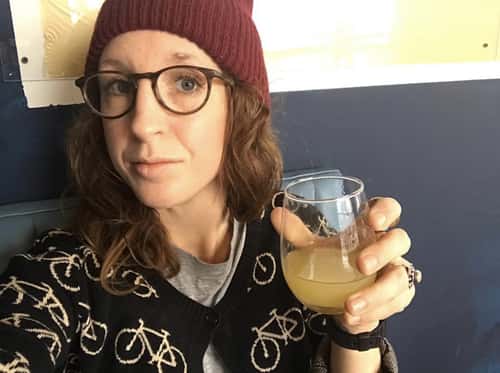
August 5, 2021
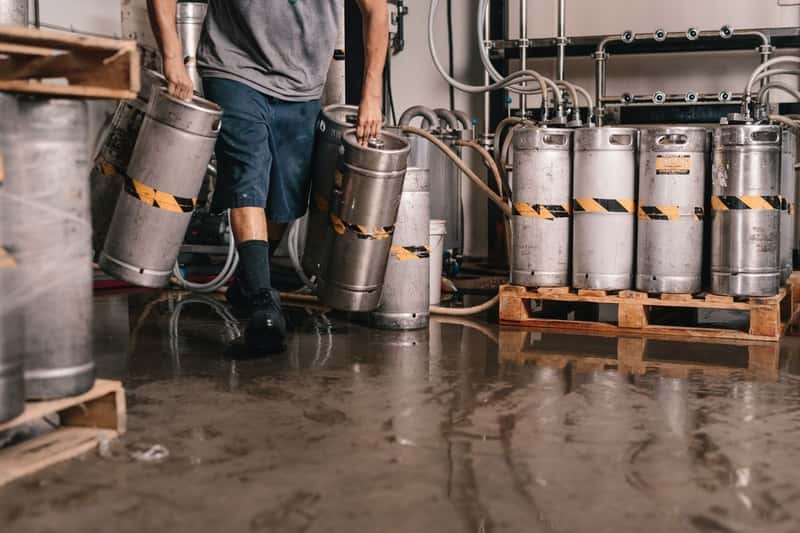
Traditional distributors are the second tier of the United States’ three-tiered system. In this system, a brewery sells beer to a distributor, who then goes on to sell it to various retail, bar, or restaurant accounts. In many states, and if you want to move beer across state lines, a traditional distributor is a necessary partner for any brewery.
But not always. For those committed to keeping beer local, learning about their local regulations, hiring sales reps and drivers, and ensuring their production matches demand, self-distribution is an option.
As a brewery, you need to make a choice. Do you want to self-distribute, work with an outside distribution company, or some combination of both?
Breaking down the advantages and disadvantages of self distributing versus traditional distribution simplifies the decision-making process. We’ve spoken with a few experts in the field to help you make a well-informed decision.
What We’ll Cover in This Piece:
Advantages of Self-Distribution
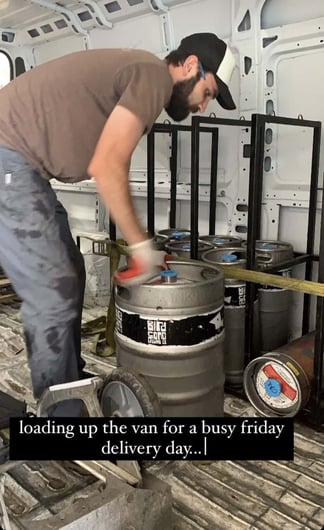
With self-distribution, the brewery itself is in charge of packaging, selling, and delivering its beer to various accounts. For many breweries, self-distribution has several advantages.
Control Over Where Your Product Gets Sold
Self-distributing gives your brewery complete control over how and where your products get sold. Plus, it allows you to make very personal connections with partners that carry your beer.
For Chris Goulet, co-founder of Birdsong Brewing in Charlotte, North Carolina, self-distribution seemed like the best choice right from the beginning.
“We basically started contacting people [ourselves] we know in the industry and getting customers in this personal and connected way,” says Goulet.
Prior to opening in December 2011, Cabo Fish Taco, a popular local restaurant, wanted some Birdsong beer. Goulet sold the first keg from his taproom to the restaurant’s manager, who drove a mile in his own pick-up truck to come get the keg.
Goulet says his brewery started small and began to grow bit by bit, hiring one full-time driver, then a full-time sales rep. Eventually, as both production and demand grew, the team grew to four full-time reps and four drivers, each with their own specific territories. It’s that personal connection, control, and sustainable growth that allowed Birdsong to expand.
Almost a decade later, Birdsong now distributes in their home county as well as surrounding counties and across the state line into South Carolina, utilizing multiple distributors for different markets.
Improved Margins on Beer

For business owners, everything is about the bottom line. And while an outside distributor has the opportunity to increase the amount of beer you sell, they also take a percentage of your revenue. With self-distribution, you cut out the middleman, meaning you keep more from every sale.
“Normally, depending on the distributor and relationship, they take anywhere from 20%-30% off the retail price," says Tanner Scarr, General Manager of Evil Twin Brewing NYC. That can be a significant amount of money that isn’t going directly back to the brewery. But if you self-distribute you retain all of those profits.
Building Personal Relationships in Your Market
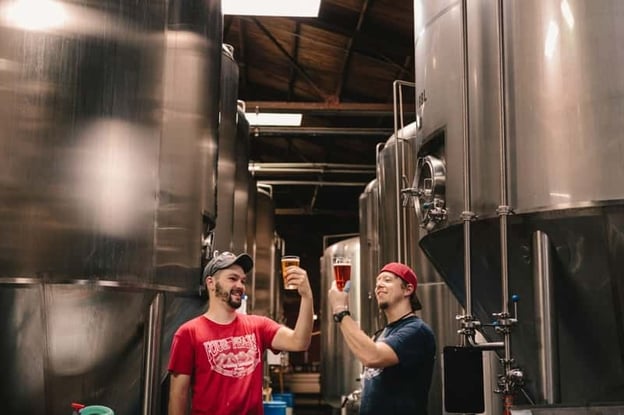
Hiring your own salespeople who get direct face time with your potential customers is a huge advantage. It allows you to build relationships in your community and receive immediate feedback.
Are accounts looking for packaged products or kegs? Does your beer sell better in high-volume establishments or smaller venues? What type of beer is popular in your area? Your sales team does the research and can work with your production team to hone your offerings, an advantage that could slip through the cracks with a distributor.
Limitations of Self-Distribution
Self-Distribution Is Expensive
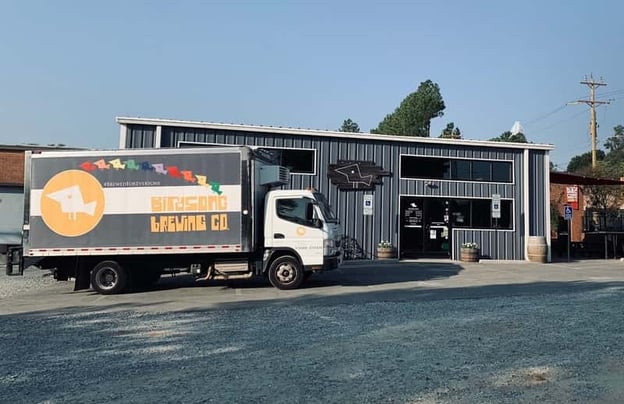
Compared to traditional distributing, self-distributing requires a higher upfront cost.
First, you probably need to hire a sales rep. Is it possible for you, the owner, to take on meeting with beer-buyers yourself and getting your product in their hands? Or, is hiring an outside salesperson necessary so you can focus on the rest of the day-to-day operations? In almost all cases of consistent distribution, having a rep on staff to solely focus on distribution allows for better relationships and successful sales.
Second, you have to choose the proper vehicle for transporting your beer. For shorter trips, like Birdsong’s first one-mile distribution, it’s reasonable to use a personal vehicle. But for longer trips, a refrigerated box truck is a necessary expense.
Then there are expenses associated with travel.
“Knowing your routes, with no backtracking or unnecessary travel time, provides a huge advantage,” says Goulet. “Setting these up ahead of time and budgeting not only the time an employee will spend on a delivery route, but the gas mileage that quickly adds up helps as you budget to ensure the lowest possible bottom line.”
Are these expenses warranted and supported? For Goulet and his team at Birdsong, the decision to start small and gradually add to their in-house sales force allowed them to make a smaller initial investment and ramp up over time. They based their expansion on revenue, adding to the team as they hit certain sales goals.
Self-Distribution Could be Illegal
Self-distribution is not legal in every state. While thirty-six states currently allow this model, the following thirteen states outlaw this process:
- Alabama
- Delaware
- Florida
- Georgia
- Kansas
- Louisiana
- Mississippi
- Missouri
- Nebraska
- Nevada
- Rhode Island
- South Carolina
- Vermont
It’s important to note that these laws are subject to change. In March 2021, Kentucky (a longtime naysayer of self-distribution), passed a new Senate bill allowing Kentucky microbrewers to sell and deliver up to 2,500 bbls of beer to retailers.
Continually check your local laws to see if self-distribution is legal in your area!
Advantages of Traditional Distribution
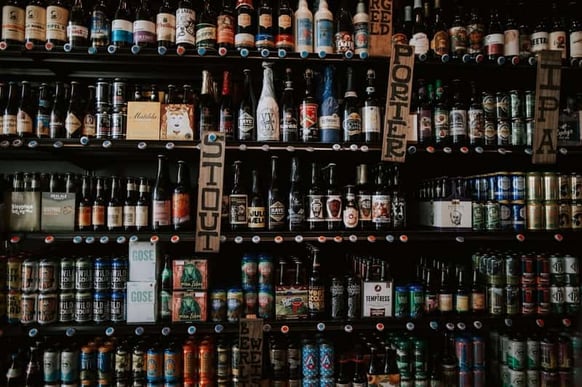
While starting in-house is the best route for some, others may find that working with a distributor at the outset best fits their sales model. Depending on your brewery’s production capacity and marketing strategy, going with a traditional distributor still might be the best option.
Saving on Up-Front Costs
“Some plan out their business, thinking ‘Man, wouldn't it be great if we didn’t have to buy an expensive box truck and didn’t have to hire a driver?” says Ed Johnston, President of Tryon Distributing, a Charlotte, North Carolina-based company which helped pioneer the area’s craft distribution industry. “It saves expenses right off the bat. If a brewery doesn’t have a ton of capital, they may try to get in with a distributor first.”
Frees Brewery Resources
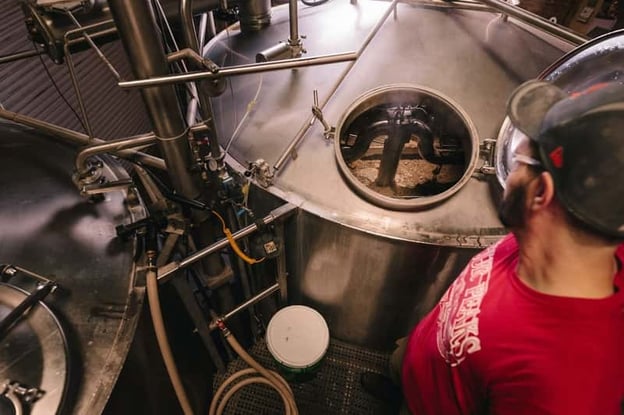
Distribution allows you to outsource what may seem like a more complex endeavor, and starting with a distributor can expand your reach and alleviate growing pains. Distributors can help with freight routes and other logistical details, freeing up time and mental space for you to focus on the brewery itself.
Increased Sales Volume
While not always the case, traditional distributors typically have a larger reach than self-distributors. And many of these companies, such as Tryon Distributing, have a long history in the industry and can tap into those decades of connections to sell your products.
Limitations of Traditional Distribution
Decreased Margins
As we’ve mentioned, distributors are a business, meaning they will take a cut of the profits from your beer sales to pay themselves. Typically, a distributor will take anywhere from twenty to thirty percent of the final sales price of the beer.
Decreased Control
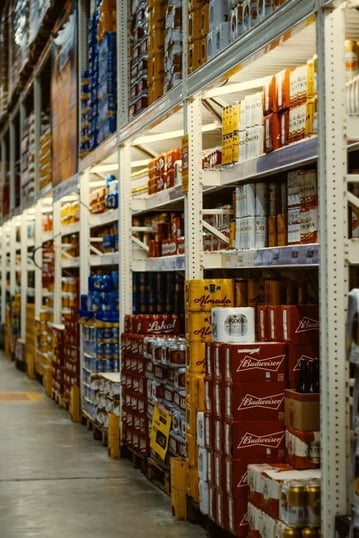
As soon as your beer lands in the hands of your distributor, it's essentially out of your control. The distributor’s sales team will now be in charge of where and how your beer is sold. And you’re competing with other brands in your distributor’s portfolio, meaning they might be more likely to consistently push what they know sells well.
Franchise Law
In many states, statutory mandates exist that lock a brewery into a relationship with a distributor in perpetuity. (Consult with an attorney to learn more about the laws in your area). In other words, once you sign with a distributor, you’re stuck with them… forever.
For example, until very recently, Massachusetts-based brewers became legally sealed into a partnership with a distributor indefinitely after only six months of working together. The only way to exit the partnership would be for the brewery to prove to the state that the distribution company violated a very specific set of conditions. This past January, the Massachusetts Legislature passed franchise law reform (Bill S.2841), allowing craft breweries producing less than 250,000 barrels annually to legally leave their distributor, at will, with thirty days notice if they pay fair market value for their distribution rights.
These statutory mandates, called franchise laws, are outdated legislation, enacted in 1971 when the words craft beer had no meaning. At the time, the state legislature sought to protect in-state distributors who were threatened by massive foreign brewers. And although the beer industry in the U.S. looks very different today, franchise laws have often failed to keep up with the times.
Although states have slowly started to make efforts to update this legislation, these out-dated franchise laws can be very limiting for a craft brewery. Currently, only six states have successfully reformed their franchise laws: New York, Maine, Washington, Vermont, and now Massachusetts.
“The reality is that for a lot of smaller craft brewers, there needs to be change from year-to-year over the course of five-to-ten years. That might mean what is a great fit for them today as far as a distribution partner might not be the right fit for them in five years,” says Sam Hendler, co-owner of Jack’s Abby Craft Lagers in Framingham, MA. “Sometimes when you don’t have that fit you can find yourself pushing for things that the wholesaler doesn’t want and then you end up in the worst possible scenario, an almost combative relationship that’s not healthy for anybody.”
Back in June 2020, Jack’s Abby‘s former distribution partner Atlantic Importing Company informed the brewery of its intent to lay off a third of its sales staff and presented them with a list of over 1,000 accounts that Atlantic management could no longer service through in-person sales. Instead, these partnerships would be managed by an online-only ordering portal.
Although Hendler couldn’t comment on the situation because of pending lawsuits with its former distributor, a statement from the Jack’s Abby team in this Craft Brewing and Business article make it clear that those lost accounts made up forty percent of Jack’s Abby’s off-premise sales, putting twenty percent of their overall volume at risk.
While this is only one story and it certainly isn’t the case with every distributor, a cautionary tale like this one means that you need to do your due diligence when picking a distribution partner.
Considerations for Choosing the Right Distribution Partner

Partnering with a distributor usually starts one of two ways.
“It can start with the brewery reaching out. If an out-of-state brewery has to go through a wholesaler, they would reach out directly and this will change state by state,” says Johnston. “In most instances, it doesn’t make sense to self-distribute across state lines unless you are right by the line, and you may have to go through a wholesaler or open another location in that state. It can be about expanding into a market and talking to a handful of distributors to find the best fit.”
Alternatively, a distributor who sees high demand for a brewery may reach out to start a partnership in a specific market.
Either way, if you do decide to partner with a distributor, there are a few things to keep in mind.
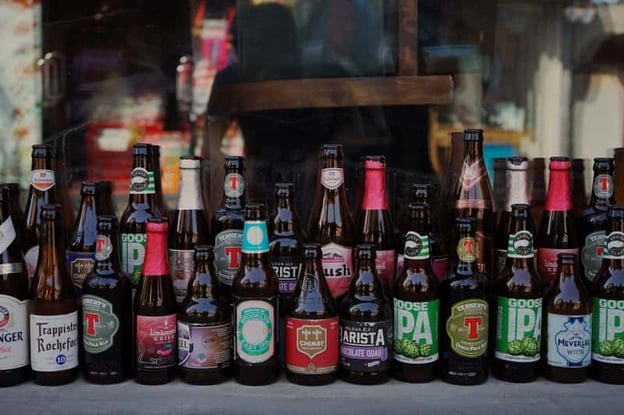
It’s a Two Way Street
“A brewery must do their due diligence because not every wholesale distributor is the same,'' says Johnston. “Sometimes the decision to partner comes down to personality and culture.”
Both Johnston and Goulet recommend reaching out to other industry professionals with whom you align, asking who they would recommend for partnership.
“I always reiterate to any brewery considering partnership that they should be talking to several other wholesalers as well. We may be the best fit, or we may not,” Johnston says. “There are many factors that go into choosing, and we want to know we are truly the best for them.”
Although it is, as Johnston says, “slightly intangible,” much of choosing a distributor is a “people thing.” Do you get along? Are your goals similar? Are there open lines of communication?
“There are times where you just don’t click at the top,” Johnston says. “Then there are others who understand us as wholesalers and we understand them as suppliers. It feels good, it feels right, and these are the partnerships we take on.”
Hendler agrees, “You’re always after this thing called fit that is hard to define exactly. How does your brand and your goals fit with the wholesaler you’re negotiating with? Do you share similar goals? Is your brand complementary to their portfolio?”
Additionally, according to Hendler it’s very important that the relationship works on a two-way street, “Is there a shared mentality and approach to the marketplace where both of your goals will be met better by working together? It has to be a synergistic relationship that is very complimentary. If it is a one way street you will never find long term success, that's the bottom line.”
For Jack’s Abby, who recently announced a new partnership with The Sheehan Family Companies to distribute their beer in New York and New Jersey (after entering a similar partnership with the distribution company to sell their beer in Massachusetts earlier this year), their brand brought several factors to the table. “There is a beauty in our brand’s inherent focus on craft lagers that we fit really well in a lot of portfolios and we felt like that was a great fit in The Sheehan [Family Companies] portfolio,” said Hendler. Additionally, Jack’s Abby will be one of the largest brands in The Sheehan Family Companies’ portfolio in Massachusetts. “Local is a very strong value to add to a wholesaler and if you can add local and built-in volume whether built up through self-distribution or otherwise that can be a very valuable combination,” says Hendler.
Important Questions to Ask
When looking at distributors, you’ll want to take some things into account in order to ensure a profitable and mutually beneficial partnership. Some questions to ask are:
- What other products do they carry?
- What does a portfolio look like and where do you fit in?
- What do you provide that is more unique or different?
- What would your advantage be?
- What can you provide them and, likewise, what will they provide for you?
- How many trucks do they have?
- Are they all refrigerated?
- Do they have a cooler big enough to always hold your product or is there a climate controlled warehouse?
Johnston recommends having these conversations upfront to help alleviate the stress of choosing the wrong company.
Hendler adds one more question to that list, “I would encourage brewers to think what do I bring to the table that is really meaningful to a distributor?,” says Hendler. “If your brand feels the same as 20 other brands in their portfolio you’re probably going to end up struggling for attention and that’s a challenging environment to be in. But if you are figuring out ways to execute a plan and have a brand that is unique or novel in that marketplace you have much better leverage to maintain that level of focus from a distribution partner.”
And for figuring out the right distribution partner, focus and promises around service are vital.
Expectations for Service
Different wholesalers have different service levels.
“Some do not call on grocery stores at all,” says Johnston. “It takes a high level of customer service to effectively merchandize and keep them happy based on their requirements. If you have any expectations of going into grocery stores, you need to make sure you partner with someone who can service chain accounts.”
If you have no expectations of grocery stores and it’s not in your model, look at distributors who work best with independent bottle shops.
“Some of the bigger breweries looking at high-volume wholesalers aren’t going to do well in the independent shops and just want big accounts and aren't going to focus on small shops that don't do a lot for the bottom line,” says Johnston.
Knowing the capabilities and goals of a distributor is important in choosing the right company.
“When it comes down to it, a lot of big distributors are very rational, data driven machines that are built for efficiently getting large brands into the marketplace and that isn’t necessarily the best match with a lot of small brewers. It can be a really tricky dynamic,” says Hendler. “For the most part [distributors] are pretty logical, straightforward companies. The biggest requirement is that mutual interest and shared goals. If you can find that fit, that's when things can be really, really good.”
A Note on Using Multiple Distributors, aka the Hybrid Model
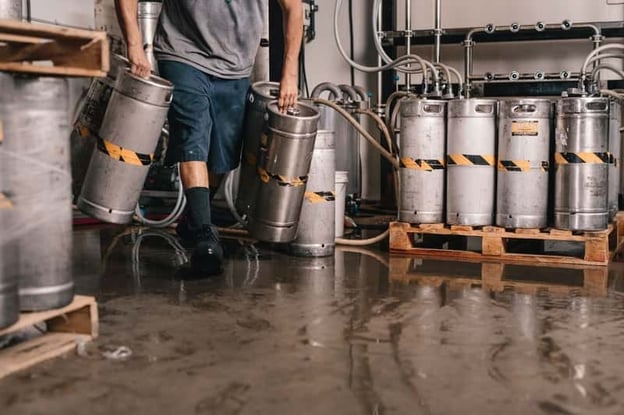
For some breweries, a combination of either multiple distributors or a hybrid of self-distribution and outside distribution might be necessary.
At Sierra Nevada, production size and multitude of locations means the brewery works with multiple distributors to get their beer from either their California or North Carolina breweries into the hands of consumers.
“Because regulations shift and we are such a large brewery, we have to work with multiple distributors, often more than one in a given state, to ensure we get our beer where it needs to go,” says Melissa Vavaro, Area Sales Manager for Sierra Nevada.
For Birdsong and many other breweries, specifically when crossing state lines, a hybrid model of distribution is employed. Birdsong self-distributes locally, but partners with a distributor to send their beer into South Carolina. As we discussed in our Shipping Beer 101 article, regulations vary from state to state and a full understanding of these guidelines is imperative.
Companies like SOVOS Ship Compliant help alleviate the strains of navigating complex distribution rules, allowing their clients (breweries, distributors, retailers, among others) to adhere to state and federal regulations and ensuring distribution compliance. With a focus on state-to-state distribution, SOVOS has simplified the regulations with their breakdown of state-specific requirements for new markets.
“As a distributor, we love it when a brewery has self-distributed before we partner,” says Johnston. “They can understand the complexities of short delivery windows and the benefits of having face-to-face interactions with buyers.”
In Conclusion
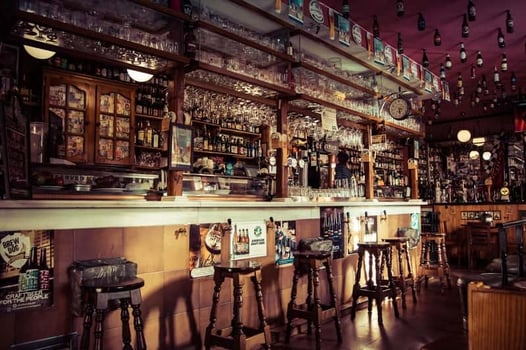
Choosing to self-distribute versus leveraging outside distribution or a hybrid model is a very important decision for your brewery. Take the time to consider the advantages and limitations and decide which is right for you.
Improve Your Brewery Production
Ollie is the platform built by brewers, for brewers™. Increase brewery productivity and sell more beer. Everything you need in one place.
